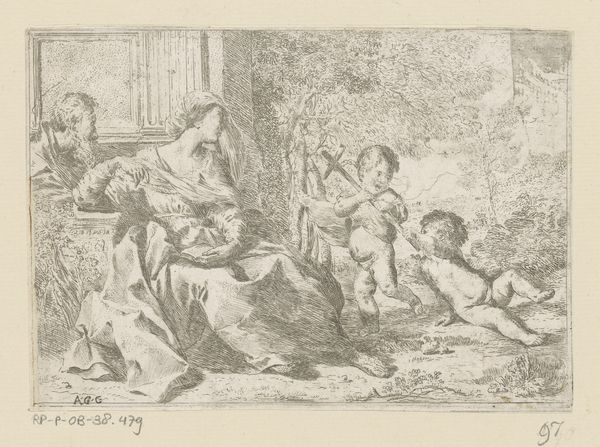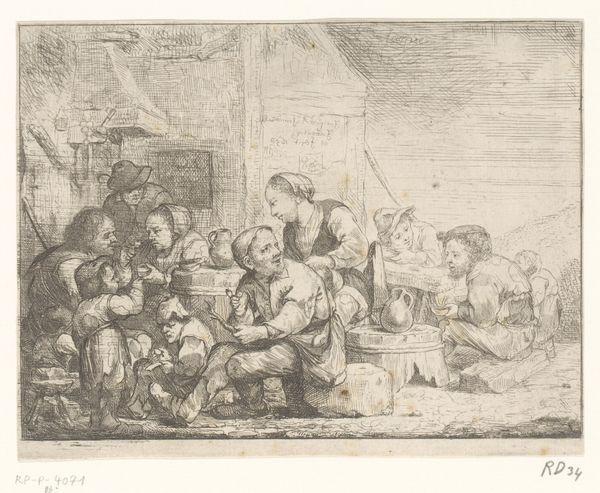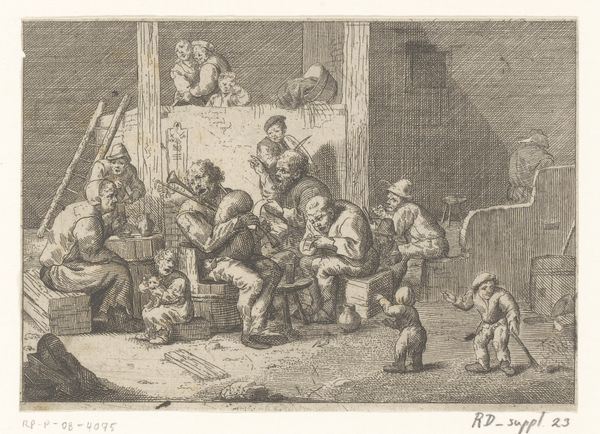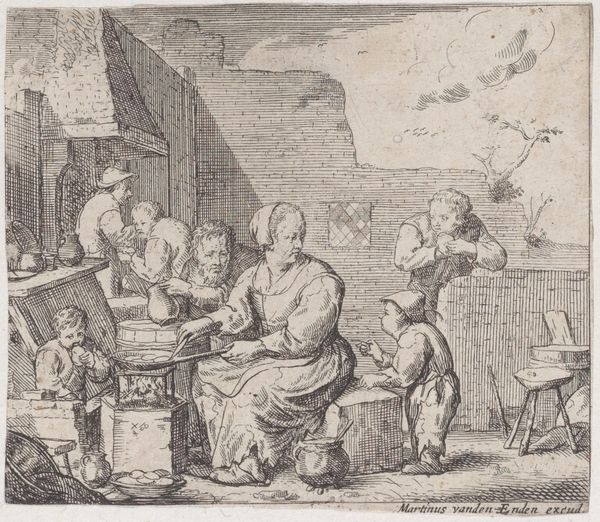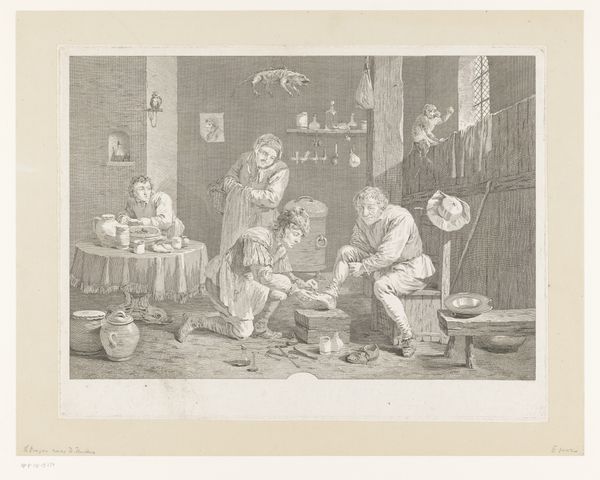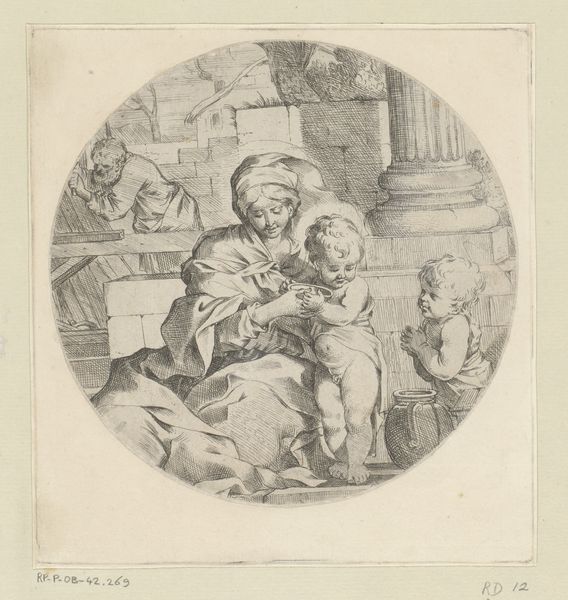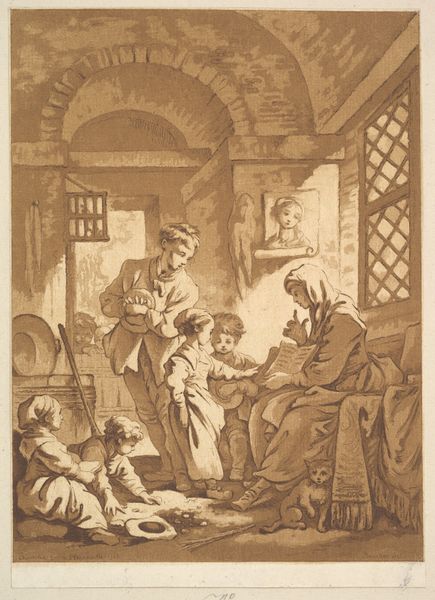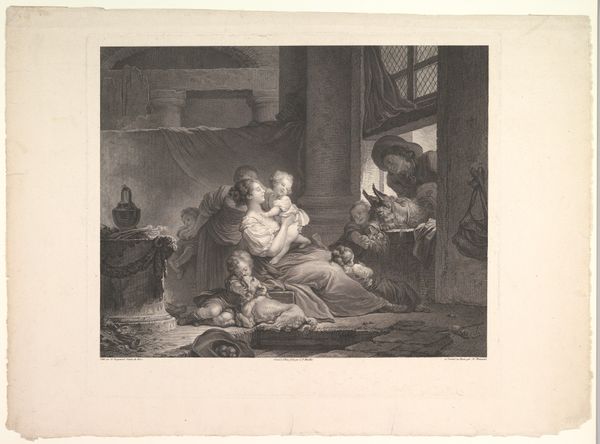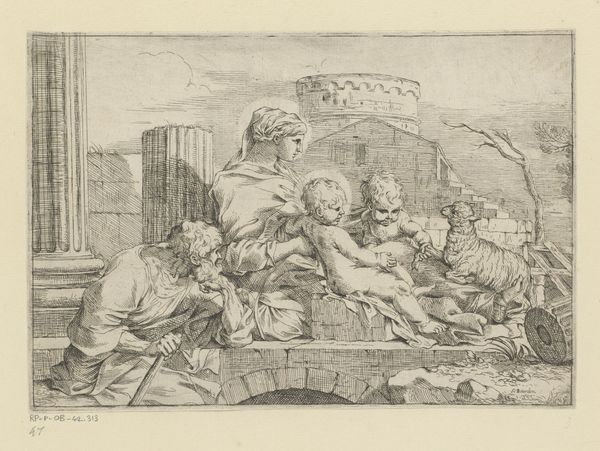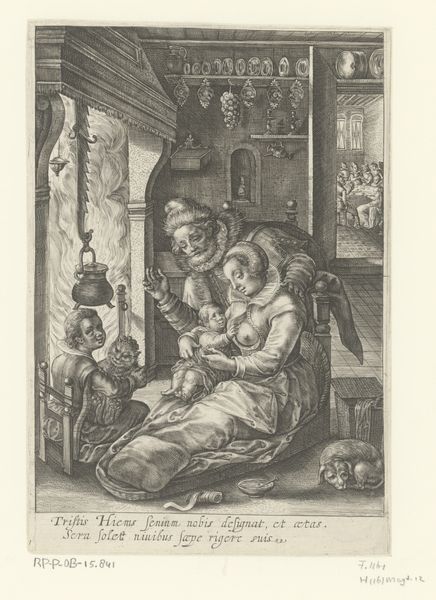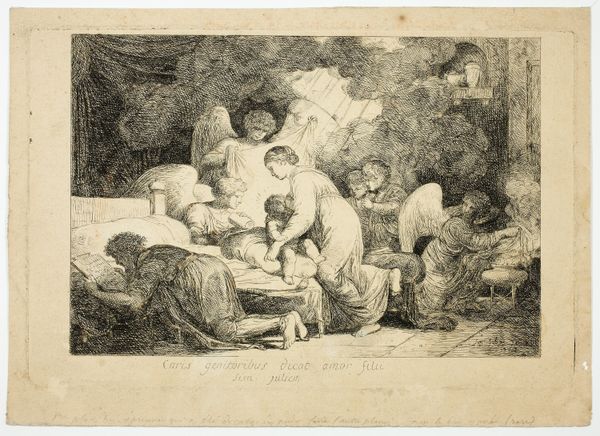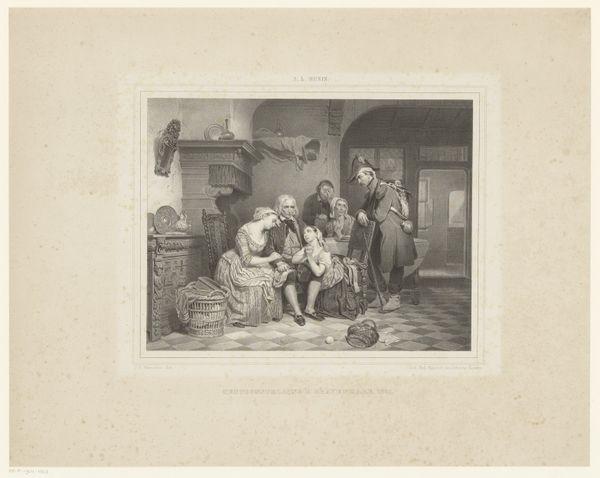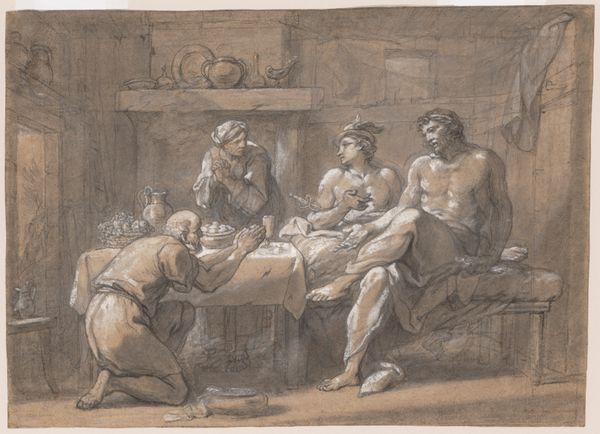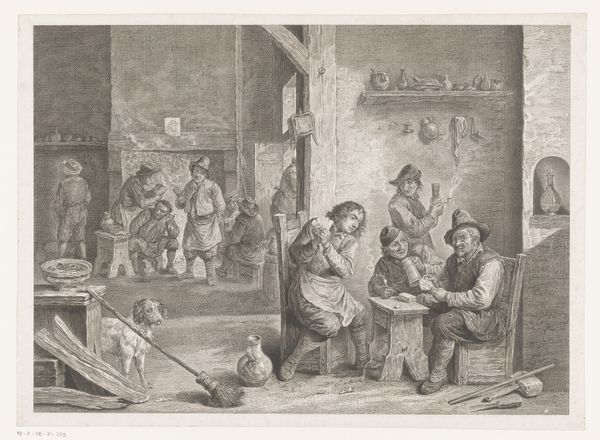
print, etching
#
portrait
#
narrative-art
#
dutch-golden-age
# print
#
etching
#
figuration
#
genre-painting
Dimensions: height 95 mm, width 131 mm
Copyright: Rijks Museum: Open Domain
Editor: We’re looking at "Huiselijk tafereel met kind aan de borst," a 17th-century etching, likely made between 1629 and 1670. It feels crowded, but also intimate, depicting a mother breastfeeding amidst a bustling scene of children and onlookers. What do you see in this piece, considering its historical context? Curator: I see a visual document embedded in complex societal power dynamics. The Dutch Golden Age, despite its economic prosperity, rigidly defined gender roles. This image, while seemingly a benign domestic scene, participates in constructing the ideal of motherhood: selfless, nurturing, and existing within the confines of the home. Editor: That’s interesting. I hadn’t thought about it that way. The domestic scene is so central, how would one perceive its relation with the male figures at windows, peering down? Curator: Exactly. Consider the gaze. Who is looking at whom and why? Those figures peering in become complicit in framing and observing a specific notion of the domestic space and gendered behavior within it. The seemingly casual arrangement reinforces this carefully constructed tableau for public consumption, in effect defining and regulating motherhood. Are the other people family or outside viewers, are they welcome or intrusive, and are they even men? What details lead you to see the peering figures as male? Editor: I’m inferring their gender through clothing. Now I’m not sure that I would define it as ideal representation or as simple as portraying everyday life of people and children? Curator: And that is precisely what makes it potent: it normalizes specific roles, erasing other possibilities. How might this image be different if rendered by a woman of the period? What voices are absent? Understanding the intersection of art and societal structures enables us to critique even seemingly straightforward imagery. Editor: I see, considering those layers makes the artwork much more significant than it appears at first glance. Curator: Exactly. Recognizing those intersections opens new avenues for interpretation and reveals the true depth of its meaning and what messages society tries to pass down through it.
Comments
No comments
Be the first to comment and join the conversation on the ultimate creative platform.
